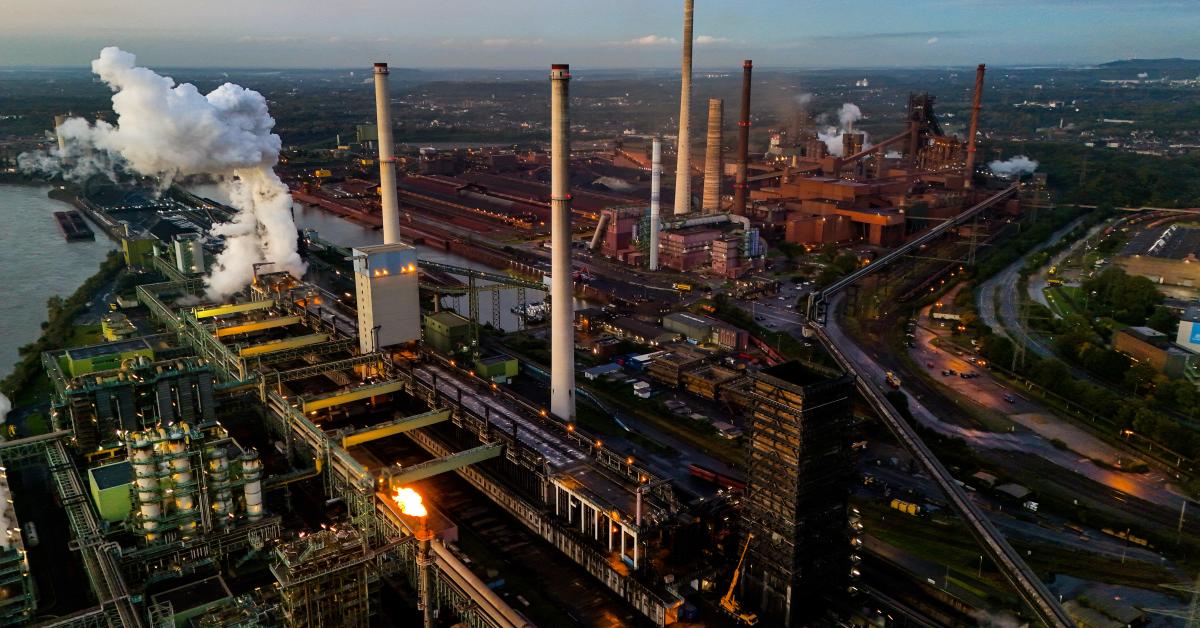We support our Publishers and Content Creators. You can view this story on their website by CLICKING HERE.

Proponents of a transition away from fossil fuels have pinned their hopes on green hydrogen to address the challenge of “clean” energy for industry, but critics have long argued the staggering costs would make the plan go up in smoke. With projects here in the U.S. and across the globe failing, and research confirming the costs are too high, critics’ predictions are turning out to be true.
“You tell people it can’t work. You write about it. And then two years later, it fails. And then people act surprised,” energy analyst David Blackmon, who publishes his work on his “Energy Absurdities” Substack, told Just the News.
The Biden-Harris administration laid out a clean hydrogen roadmap in June 2023, which included $9.5 billion in funding from the 2021 infrastructure law. “Given its potential to help address the climate crisis, enhance energy security and resilience, and create economic value, interest in producing and using clean hydrogen is intensifying both in the United States and abroad,” the roadmap declared.
“Green hydrogen”
While wind and solar can at certain times produce electricity, that’s only about 20% of the energy people consume. Industry and transportation make up the rest. Using wind and solar to power heavy industries — such as steel, ammonia and concrete — is a challenge. The energy demand is enormous. Steel production, for example, requires temperatures in excess of 2,900 degrees Fahrenheit.
Proponents of net zero hoped to address the challenge with hydrogen-based technologies. Hydrogen can be produced in a number of ways, but it’s not an energy source. It’s an energy carrier, meaning you have to use energy to make the product, which can then be converted back into energy. And you lose about 50% to 80% of the energy used in the process.
Almost all hydrogen production today comes from processes using natural gas. “Green hydrogen,” however, splits water into hydrogen and oxygen using a process called electrolysis powered by electricity that’s most often produced with wind and solar.
Water use is one of the big challenges of green hydrogen. On his Substack, energy expert Robert Bryce reported on a project in Texas that plans to suck 433,000 gallons of water per day — enough to fill more than four Olympic-size swimming pools each week — from an aquifer. A local group is fighting to stop it.
In “Green Breakdown,” energy researcher Steve Goreham explains there are other challenges. The gas degrades metal through a process called hydrogen embrittlement, which means transporting the gas by pipeline risks explosions.
The other problem is the amount of electricity that would be needed. Citing figures from the International Energy Agency, Goreham estimates that producing all the requisite primary chemicals would require between 12,000 and 17,500 terawatt hours of renewable electricity. This is between three and more than four times the total amount of electricity produced in 2023 by all wind and solar farms across the globe.
Even if that much wind and solar could be used to produce enough hydrogen to replace fossil fuels in industry, the cost would be prohibitive, according to a Harvard study published in Joule last week.
“Even if production costs decrease in line with predictions, storage and distribution costs will prevent hydrogen being cost-competitive in many sectors,” the study’s lead author, Roxana Shafiee, a postdoctoral fellow at the Harvard University Center for the Environment, said in a statement. Co-author Daniel Schrag, Sturgis Hooper Professor of Geology and Professor of Public Policy at Harvard, said in the release that hydrogen could play a role in reducing emissions, but it would be unwise to expect green hydrogen to be a total solution.
“Our results challenge a growing idea that hydrogen will be the ‘Swiss army knife of decarbonization’ and suggest that the opportunities for hydrogen may be narrower than previously thought,” Shafiee said, referring to a quote from Microsoft founder Bill Gates, who is investing in hydrogen production.
Catalogue of failures
The 2021 infrastructure law provided $7 billion in funding for hydrogen production hubs across the U.S. One year ago, the Department of Energy announced the recipients of the funding. Not much has happened since the money was awarded, Canary Media, an anti-fossil fuel activist publication, reported this week.
Information on the projects’ status remains scarce, and there’s little indication much is happening at all. The hubs require about $40 billion in private-sector investment to meet the matching requirements of the DOE funding, which is difficult with the industry’s unfavorable economics.
A research brief published this week by the Ohio River Valley Institute, on the Appalachian Regional Clean Hydrogen Hub, which was also among the seven projects the DOE selected, found that four of the project development partners have left the hub, two of the remaining partners are in “states of chronic financial crisis,” two of them have no experience developing or managing an industrial facility, five of the 15 original projects have been canceled — on top of other issues.
Bryce, the energy writer, calculated that the tax credits for green hydrogen are nine times higher than subsidies for solar, 47 times higher than subsidies for wind energy, 1,800 times greater than those for fossil fuels, and 1,900 times greater than those of nuclear.
Despite this outpouring of federal support, Bryce catalogued projects across the world that are failing, including a project in Sweden by offshore wind developer Orsted. It was scrapped, according to Orsted, as a result of the “sluggish European green fuels markets.” One week after announcing a green hydrogen project, the French firm McPhy Energy canceled plans this month to develop a green hydrogen project after the buyer withdrew.
Canada’s plans to create a green-hydrogen supply chain to Germany are delayed as a result of a “supply-demand mismatch,” The Globe and Mail reported. A Canadian official told the Mail that shipments are still expected to happen “around 2026, 2027 or 2028.”
Mississippi-based Hy Stor Energy canceled a reservation for a 1-gigawatt electrolyzer from Norway’s Nel, which was to support the Mississippi Clean Hydrogen Hub. While the project was going to be the largest off-grid hydrogen production and salt cavern storage hub, according to H2-View, it wasn’t one of the seven hubs selected for $7 billion in funding from the Department of Energy.
Earlier this month, Blackmon wrote about a German project that sought to produce steel using green hydrogen. The German government showered Thyssenkrupp with 2 billion in euros ($2.178 billion USD), but as Reuters reported, the company is considering halting a planned facility, which is costing more than initially expected.
“Perverse incentives”
Blackmon said in an interview that, besides the incentives created by the subsidies, governments pressure companies to go net zero, creating a carrot in one hand and stick with the other. This and not economics, he said, is what’s driving investments into the industry.
“It just creates billions and billions of dollars of perverse incentives and misallocations of funds of capital,” Blackmon said.
Unfortunately, Blackmon said, all the subsidies going to the projects could ultimately end up as losses that the taxpayers have to bear. “What we’re doing is not sustainable if the country wants to have energy security and avoid national bankruptcy. You just can’t keep doing this,” Blackmon said.

 Conservative
Conservative  Search
Search Trending
Trending Current News
Current News 





